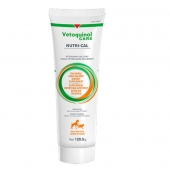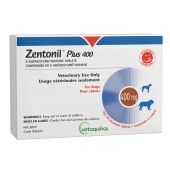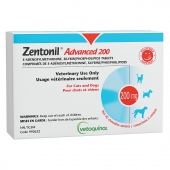The pandemic has accelerated innovation in the field of telemedicine, and many veterinary clinics now offer remote consultations using videoconferencing software like Zoom or specialised platforms. Veterinary visits can be stressful to some dogs and cats, and being able to receive the care they need without leaving home is likely a relief. Still, you can make the telemedicine experience even more pleasant by applying a simple veterinary concept: the Fear Free approach.
What is “Fear Free” veterinary medicine?
Pioneered by American veterinarian Dr. Marty Becker, Fear Free is a concept of veterinary medicine that focuses on reducing feelings of stress in the patient, improving the experience for all involved, including pets, owners and the veterinary staff. The Fear Free concept is based on recognizing signs of fear, anxiety and stress and taking steps to alleviate such feelings. While the idea is closely associated with veterinary hospital visits, it can be applied to at-home, telemedicine consultations as well.
Signs of fear, anxiety and stress in pets
The first step is spotting when your pet is feeling stressed, which they will display through a variety of physical signs. Cats may crouch, hiss, have dilated pupils, pin their ears down or even tuck their tails.. Dogs may draw back their lips, have dilated pupils, lower their body and snarl or growl. Whenever possible, avoid what you know your pet finds stressful, such as loud noises, sudden movements or being touched in specific body areas.
Applying the Fear Free approach to telemedicine
Your telemedicine appointment can likely take place anywhere using your phone or tablet - don’t feel restricted to your home office. Choose a location where your pet feels comfortable, such as the sunniest spot on the living room floor or a comfy couch. Pick an area with plenty of natural light, which will help your pet’s veterinarian see better during the visual examination they will do of your pet. As you wait for your appointment to start, sit down with your furry friend and pet them while speaking in a soothing manner.
During the appointment, do your best to remain relaxed and to speak normally and in a calm manner when interacting with your pet’s veterinarian. You may find it’s actually easier to have a discussion regarding your pet’s health when they’re in familiar surroundings, rather than pacing around an exam room.
Make sure to have treats on hand to reward your pet throughout the appointment, especially if they need to be held in a specific way to show parts of their body to the veterinarian for assessment.
Using natural stress reducers
Still, some medical conditions can’t be diagnosed remotely and a no-contact vet visit may be required for a physical exam or for certain follow-up procedures. If your pet is dreading situations like these, ask your veterinarian about natural stress reducers. For example, supplements containing alpha-casozepine, an ingredient derived from milk protein, are known to have calming properties in both cats and dogs and can be used to alleviate stress caused by specific events.






